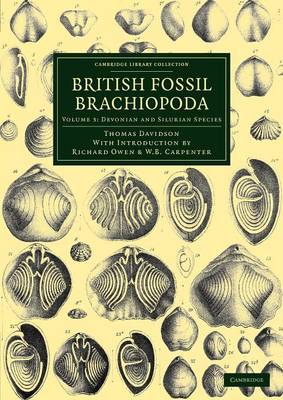Cambridge Library Collection - Earth Science
4 primary works • 8 total works
Volume 3
Volume 4
Volume 5
Volume 6
British Fossil Brachiopoda: Volume 6, Bibliography of the Brachiopoda
by Thomas Davidson
British Fossil Brachiopoda: Volume 2, Permian and Carboniferous Species
by Thomas Davidson
British Fossil Brachiopoda: Volume 3, Devonian and Silurian Species
by Thomas Davidson


